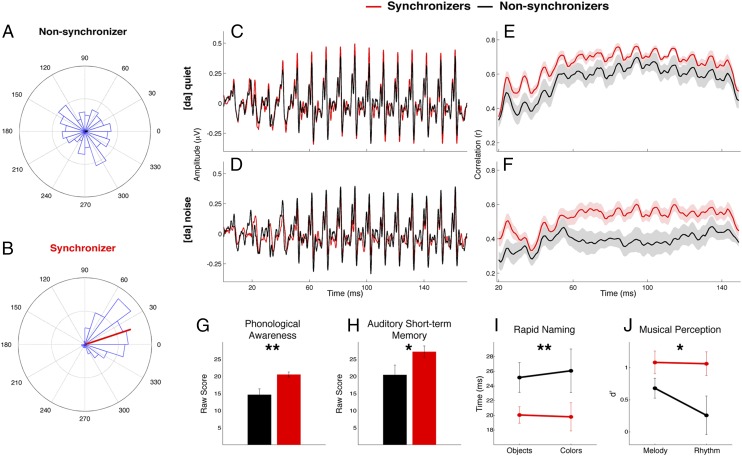Fig. 1.
The ability to synchronize to a beat relates to neural encoding of speech and prereading language metrics. Data for Synchronizers are shown in red, data for Non-synchronizers in black. (A and B) Phase histograms (blue) of representative participants’ drum hits across a drumming session relative to stimulus (0°). (A) The Non-synchronizer’s drum hits are distributed randomly throughout the stimulus-phase cycle, with a negligible phase vector (black). (B) The Synchronizer’s drum hits cluster around a time region just before the stimulus, indicating the child is predicting the beat. The length of the mean phase vector (red) corresponds to the consistency of the relationship between the time of the drum hit and the time of onset of the stimulus. (C and D) Synchronizers (red) and Non-synchronizers (black) did not differ in broadband subcortical encoding of the speech syllable [da] in (C) quiet or (D) background noise. (E and F) Synchronizers benefit from selectively enhanced envelope precision encoding, as evinced by higher stimulus-to-response correlation values. (G–J) Synchronizers also performed better than Non-synchronizers on behavioral reading-related tasks measuring (G) phonological processing, (H) auditory short-term memory, (I) rapid naming, and (J) musical perception. *P < 0.05, **P < 0.01.

